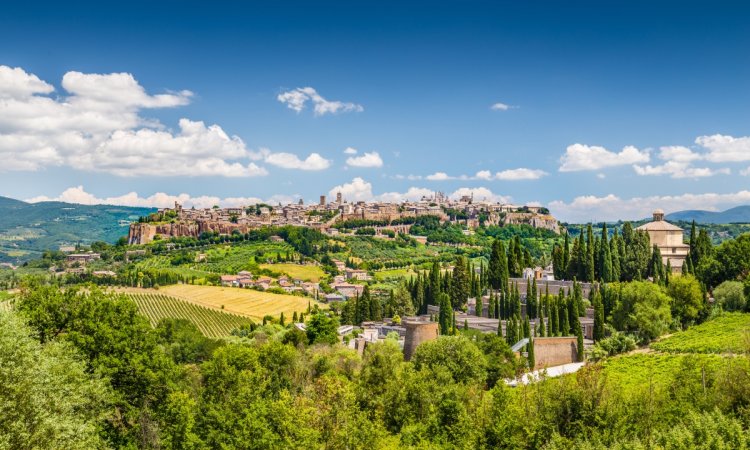
If you’re looking to discover off-the-beaten-path adventures in Italy, set your sights on Orvieto. This shining medieval city, inhabited since before the Roman Empire, sits on the flat top of a volcanic bluff from a long-ago eruption. With a long-standing history, gorgeous architecture, and a famous local white wine, it makes an excellent visit for any Italian trip.
Unlike some ancient hilltop towns, Orvieto has a secret.
Orvieto used to be an Etruscan city, built to withstand sieges. The only problem: its main source of water was outside the city. So the Etruscans dug wells for water. Over time, and through multiple civilizations, these wells grew into one of the largest networks of tunnels and caves in Italy.
Carved into the porous volcanic rock below the city streets is a network of more than 1,200 tunnels, galleries, stairs, rooms, quarries, cellars and surprise passageways. This massive underground space was a construction project that would continue for approximately 2,500 years.
The work the Etruscans continued up until medieval times. Due to its natural fortifications, Orvieto used to act as a place of refuge for the Pope.
The Pozzo di San Patrizio, known as St. Patrick’s Well in English, is one of the most architecturally impressive parts of the city’s underground. This well was built to ensure the Pope had water during a time of siege. Incredibly complicated to create, the well is 175 feet deep, 45 feet across, and requires 496 steps to get to the bottom.
The name is derived from a Medieval legend that said St. Patrick’s Purgatory in Ireland led all the way to purgatory, emphasizing the incredible depth of the Pozzo di San Patrizio. In fact, there’s an expression that lasts to this day: when Italians discuss completing a difficult task, they say it’s “like digging St. Patrick's Well."
If you explore the Orvieto’s tunnels today, you'll find a wide variety of spaces, including rooms with kilns that fired fine pottery and a whole operation for pressing olive oil, with millstones, furnaces, and drinking troughs for animals participating in the manual labor. The walls even hold small holes called columbaria, which allowed pigeons a place to roost. Pigeon remains a popular dish in Orvieto to this day.
This subterranean construction was lost for ages until the 1970s when a rockslide revealed an entrance into the cave system. Since then, teams of speleologists (scientists who study caves) and archaeologists have teamed up to explore its geologic and historical significance.
Today, locals in Orvieto Umbria offer guided tours of the grottos to help visitors get a better sense of what it was like to live in this ancient Etruscan culture. Once you're done in the caves come topside for a while — Orvieto is a treat to explore on foot. Take a stroll in the evening to enjoy the feel of the medieval architecture. Don't forget to sample some of the local Classico wine. Just a quick hop from Rome, we’re sure that the city will have you leaving with a smile.


